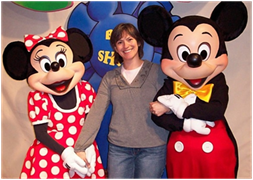|
Leticia (middle) at APTC in Orlando |
|
Book Review: Freedom by Jonathon Franzen Leticia Flores
I read Jonathon Franzen’s latest book “Freedom” this past Fall, just as I was getting rolling in a new Object Relations peer supervision group. In our group, we were starting with chapters reviewing theory in Scharff and Scharrf’s “Object Relations Individual Therapy”. As I started getting in depth with both books, I found that my thoughts on each became intertwined, and that one informed the other. His description and exploration of the internal dynamics of “Freedom”’s characters and the dynamics regarding the characters’ relationships can easily be interpreted through the lens of OR theory- which I will do for the next few paragraphs. In my interpretation, Franzen’s title “Freedom” is a myth- we may think we have the freedom to choose the way we live our lives, but we are always bound by shaping experiences with parents and family. These experiences color everything we do as a reaction for or against, and drives who we love, how we love, and whether we love at all. The first and primary narrative voice in “Freedom” belongs to Patty Berglund, described as an “enviably perfect” mother. What appears to be perfect on the outside quickly shows cracks, as Patty details in her journal to readers the apparent absence of parental warmth and support she experienced (and internalized) from childhood. She receives no early encouragement and acknowledgement for her natural athletic talents, and is instead left to develop a shakier internal sense of worth and stability from her basketball team members and coaches. When Patty is sexually assaulted at a party by a neighbor boy in high school, her father explains to her that she should “shake it off” and “move on” to avoid public humiliation. Her parents’ need for good will with the perpetrator’s parents are implicitly deemed more important that Patty’s reaction of anger, fear, and need for protection/retribution. The perceived chronic indifference of Patty’s primary caregivers to her psychological and emotional development and nurturance leaves Patty unable to reliably “read” herself or others or differentiate her needs related to others. Nor can she consciously accept and value her own desires and needs, which is necessary to effectively meet them. Patty consequently falls prey to a college girlfriend who deftly manipulates by psychologically fusing with Patty- she essentially tells Patty what Patty wants and needs, and Patty is truly “defenseless” in the face of this repeated boundary violation. No one else has ever acknowledged or respected Patty as an individual in her own right, so why would she expect (or even recognize) such a thing? The book goes on to explore how Patty’s characterological development shapes her relationships with those around her- her husband, her lover, her children and even her neighbors. She foregoes any authority with her children (particularly her son, the reasons for which become clear as the story goes on) in favor of keeping them uncomfortably close. In one section, as she argues for and against her “psychological prosecution”, Patty remarks that
….She loved Jessica (daughter) the appropriate amount but Joey (son) she loved way too much. She knew what she was doing and she didn’t stop, because she was mad at Walter (husband) for not being what she really wanted, and because she had bad character and felt she deserved compensation for being a star and a competitor in a housewife’s life....
Patty taints her relationship with her “good” husband Walter because she cannot tolerate his certain (and idealized) love for and confidence in her. She must instead seek satisfaction and confirmation of her internal, negative self object by cheating with her corresponding “bad” lover- who also happens to be her husband’s best friend. Throughout the book, Franzen uses terms like “transitional object”, “good” mother” and “fusing identities”. He describes phenomena wherein characters lose the boundaries between where one starts and the other ends, to sometimes disturbing and repellent effect. Object relations bells just kept ringing in my head as I worked my way through the story. While Patty is the main character, Franzen spends time discussing the dynamics of the other characters and how they interact with each other; you can see more clearly here than in many novels how the relational puzzle pieces fit together or rub against each other depending on each character’s “stuff”. Because characterological development continues across the life span and is influenced by life events, “Freedom” allows us to read how Patty’s sense of her self and her relationships change over time. As she becomes (a little) more aware of herself and her motivations, so she also becomes (a little) more able to manage her problematic yet pivotal relationship with her nuclear family. As she slowly discovers more and accepts her true self (yay for therapy!), she is increasingly able to see others for who they are, instead of as projected and introjected objects based on her own narcissistic fears and needs. She both takes responsibility and forgives herself for her mistakes, and forgives and reconciles with her parents as much as she can. As Klein might say, we see Patty move from the paranoid/schizoid position to a more realistic and poignant depressive position with many of those close to her. Poignant because achieving the depressive position brings Patty (and all of us) face to face with the fact that we are in the end truly alone with ourselves, and cannot become one with another as we once believed we could/did with our primary caregivers. Despite reaching this sad conclusion, Franzen shows that we can still inhabit what Winnicott called the transitional space between self and the other, and find some solace and relief in achieving this imperfect yet potentially deeply satisfying union. And that, as we say, is good enough. |
